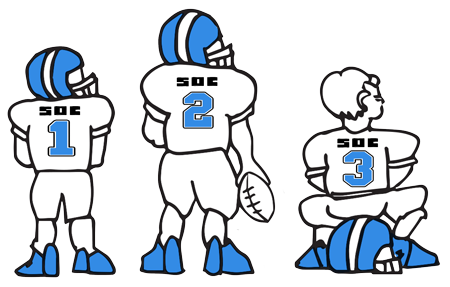ICFiles
SOC 2

Secure File Transfer Soc 2 starts at $1 per month
Rules for an Inherited IRA
Financial Planning
October 2013
Get this Article Get this Article & Suite of Tools
Rules for an Inherited IRA
![]() Generally, investors open an IRA with one goal in mind: To accumulate assets tax-deferred in order to build a healthy retirement nest egg.
Generally, investors open an IRA with one goal in mind: To accumulate assets tax-deferred in order to build a healthy retirement nest egg.
However, with many Americans working later – often into their 70s – they might not need to tap their IRAs for retirement income. But because the focus of an IRA is on tax-deferred growth for retirement, many people don’t think about steps they can take in their estate planning to reduce the taxes that will be payable on these assets by their beneficiaries.
Although both tax-deferred plans are designed to help people save for retirement, IRAs are a much different beast than employer-sponsored 401(k) or 403(b) plans. For one thing, an IRA typically has more flexibility in beneficiary designations.
Some employer plans do not allow married couples to select anyone but the other spouse as the beneficiary of the plan. They also may not allow you to name multiple beneficiaries. By contrast, a traditional IRA not only allows you to name many non-spouse beneficiaries for a single account, but it also permits you to skip generations when designating a beneficiary.
The rules are different for the married spouse beneficiary of an IRA holder versus a non-spouse beneficiary. For one thing, a spouse really doesn’t inherit the account so much as assume it as his or her own. In contrast, a non-spouse beneficiary must take distributions from the IRA, but an IRA owner can set up the account in a way to minimize those distributions and maximize long-term tax deferral.
For a spouse inheriting an IRA, available options depend on whether the account owner had started taking distributions yet. If not, the spouse can treat the IRA as his or her own or roll it over to an IRA in his or her name. Bear in mind that if you roll the plan into your own IRA and are younger than age 59½, any distributions you take will be subject to a 10 percent early withdrawal penalty. If you leave the IRA account as a “beneficiary IRA,” you can not only withdraw assets penalty free immediately, but you will have to receive Required Minimum Distributions (RMDs) every year based on your own life expectancy.
If the owner had begun taking distributions before dying, another variable depends on the couple’s ages when the account holder died. If he died after starting RMDs and was older than his wife, the wife can treat the IRA as her own. However, if the decedent died after starting RMDs and was younger than his wife, she can treat the IRA as a Spousal Inherited IRA and take RMDs based on the previous life expectancy of her deceased husband.
The rules for a non-spouse beneficiary are more advantageous, because you can extend the growth potential of an IRA investment. This is typically called a “stretch” IRA. A non-spouse beneficiary who inherits the IRA before RMDs began can take distributions based on her own life expectancy. If the beneficiary is a child or someone much younger, those distributions may be much smaller so more of the account value has the opportunity to grow tax-deferred over a longer timeframe. If she inherits the IRA after the account owner had begun RMDs, she can take distributions based on the longer of either her or the decedent’s life expectancy.
A non-spouse heir may even deploy this strategy as the named beneficiary of a 401(k) or 403(b) plan. By rolling over the account to an IRA Deceased account upon the account owner’s death, he or she can take distributions based on the same set of rules.
Ultimately, the younger the beneficiary, the greater the growth opportunity over his or her longer life span.
Get this Article Get this Article & Suite of Tools
These articles are intended to provide general resources for the tax and accounting needs of small businesses and individuals. Service2Client LLC is the author, but is not engaged in rendering specific legal, accounting, financial or professional advice. Service2Client LLC makes no representation that the recommendations of Service2Client LLC will achieve any result. The NSAD has not reviewed any of the Service2Client LLC content. Readers are encouraged to contact their CPA regarding the topics in these articles.
Dynamic Content Powered by Service2client.com
SEO Content Powered by DynamicPost.net






